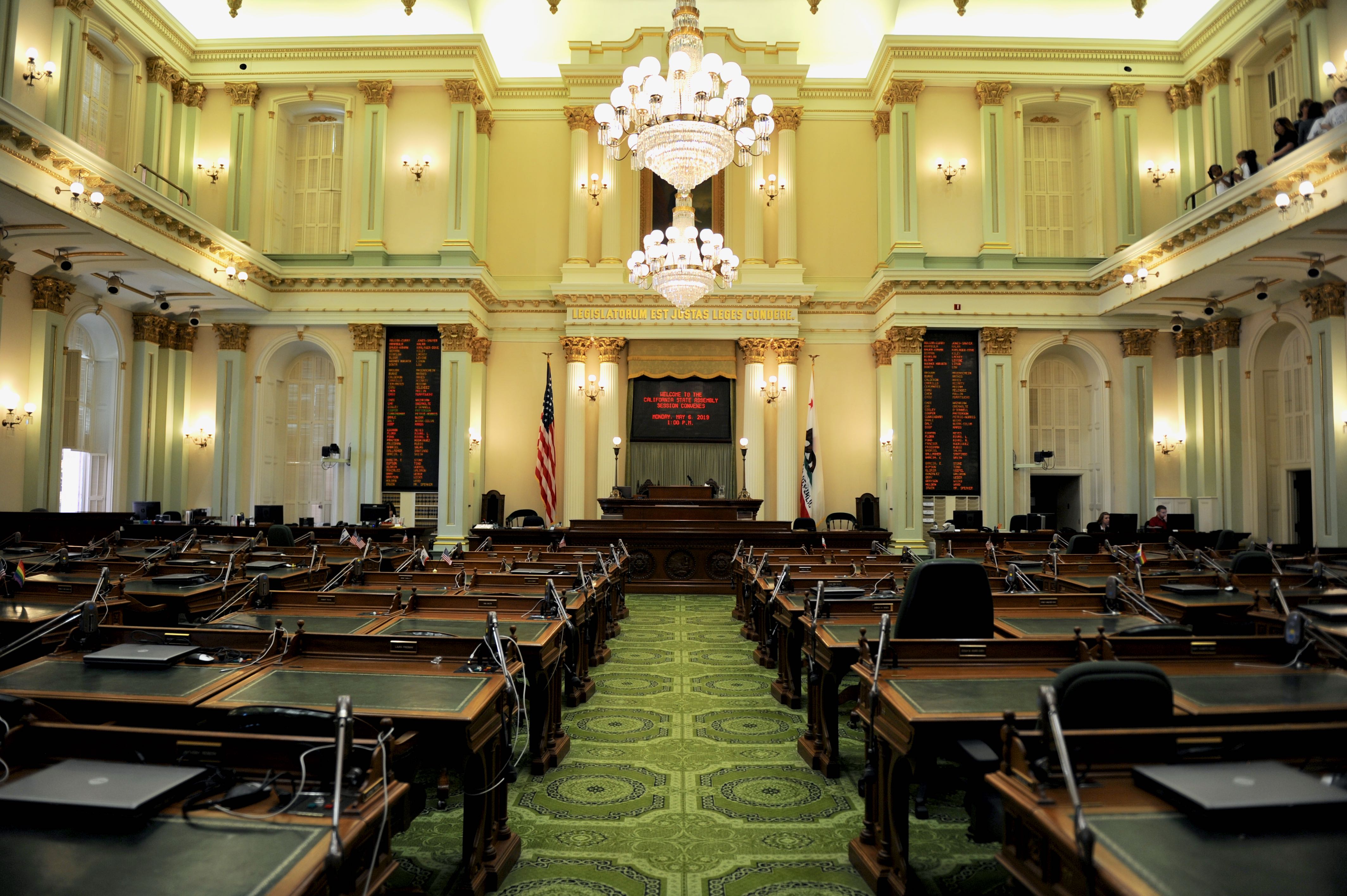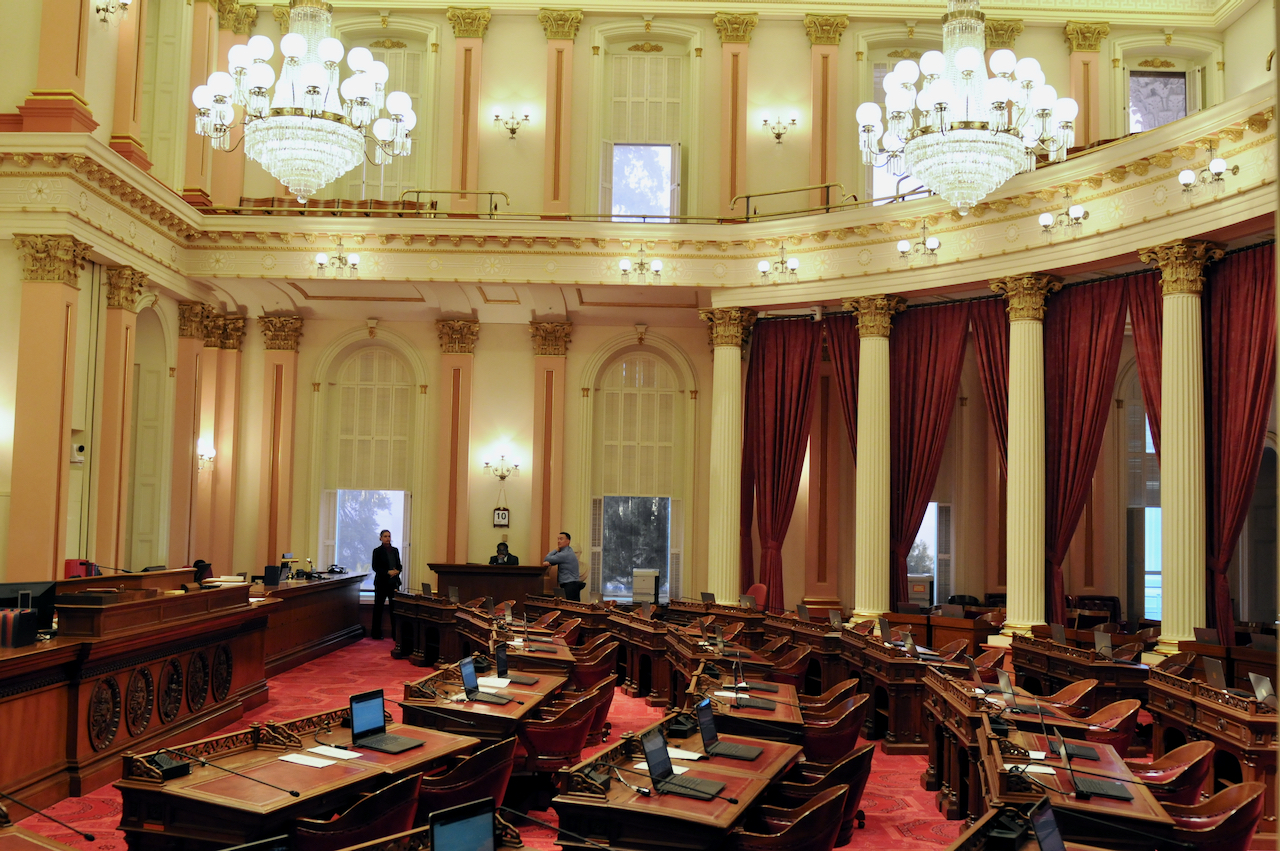
California State Senate. (Photo: Kevin Sanders for California Globe)
Addressing a Few Differences in Legislative Floor Operations
Can business be conducted on the Senate and Assembly Floors past midnight on the last day of session in an odd-numbered year?
By Chris Micheli, September 5, 2021 9:16 am
In response to multiple questions over the past week, the following is a brief explanation of the differences in four common legislative floor operations in the California Legislature.
Concurrence Measures
How does each house of the Legislature handle “concurrence items”?
Under Assembly Rule 77, concurrence in any Senate amendment to an Assembly Bill requires the same affirmative recorded vote as the vote required by the California Constitution for the passage of the bill. That should be obvious. In the Assembly, the vote on concurrence may not be taken until the bill has been on the Unfinished Business File for one calendar day. This is referred to as the “one-day wait period” used when amended ABs return from the Senate.
However, the one-day wait period does not apply the last two legislative days preceding the end of Session, which would be September 9 and 10 during this 2021 Legislative Session. Of course, AR 77 can be suspended as was done twice last week. Before a concurrence vote, the Members must have an analysis for the bill on their desks, unless the Speaker orders otherwise.
On the other hand, the Senate does not have a one-day wait period for concurrence items. Under Senate Rule 29, a Senate bill returned from the Assembly for concurrence in Assembly amendments may not be considered until the measure appears under Unfinished Business on the Senate Daily File and an analysis is provided to each Senator. But SR 29 does not include a one-day wait period.
Floor Amendments
How does each house of the Legislature handle Floor amendments?
Last Friday, September 3, was the deadline for amending bills on the Floors of the Assembly and Senate according to the Joint Rules (see Joint Rule 61(a)(13)). The two houses operate slightly differently in how they amend the other house’s bills on their respective Floors.
The Assembly was required to submit amendments the night before Friday’s deadline (i.e., Thursday evening). That deadline is usually 5pm, but the Assembly Desk remained open later in order to process the submitted amendments which also had to be returned by the Office of Legislative Counsel.
Then, on Friday, the floor manager of the Senate Bill being amended stood up on the Floor and presented the proposed amendments and sought approval for those amendments. Approval can be made with either unanimous consent of the Members, or by a roll call vote, which can be requested by any Member. In that case, the bill is amended by a majority of those present and voting. In the Assembly, a bill amended on Third Reading remains to the Third Reading File.
As opposed to the Assembly, the Senate does not present amendments on the Floor, nor does it vote to adopt amendments, but amended bills return to their Second Reading File. Amendments to ABs are simply processed by the Senate Desk. As a result, amendments to Assembly Bills were made until the Senate Desk was closed Friday evening. The amendments must include an analysis prepared by the relevant policy committee in order for the Desk staff to process the amendments to the AB. In the Senate, a bill amended on Third Reading is placed on the Second Reading File and the following day the bill returns to the Third Reading File.
Batching v. Consent
What is the “batching” process used on the Assembly Floor?
Recently, Capitol observers may have heard the term “ batching” used on the Assembly Floor. This is a process that once unanimous consent is received on the Floor, permits a single vote for multiple bills or amendments to be adopted. It is used occasionally where both the Democratic and Republican Caucuses have a “support” recommendation and there have not been any Republican legislators who abstained or voted “no” in committee on the measure.
It is a variation of the Consent Calendar, which has formal rules for determining which measures will be placed on the Consent Calendar. “Batching” is similar to the Senate’s “Special Consent Calendar” which is used when there are bills that have “support” recommendations by both the Democratic and Republican Caucuses. The Senate’s “Special Consent Calendar” is different than its “Consent Calendar.”
Going Past Midnight on the Last Day
Can business be conducted on the Senate and Assembly Floors past midnight on the last day of session in an odd-numbered year?
The question always arises at the end of Session when the clock gets close to midnight: Can the Legislature go past midnight and continue its work? In the even-numbered year, that question is clearly answered by the California Constitution. Pursuant to Article IV, Section 10(c), the Legislature must conclude their work by midnight on August 31, except if they consider three types of bills that can be acted upon past that deadline.
On the other hand, during the odd-numbered year, the date of adjournment is set by the Joint Rules of the Assembly and Senate (see Joint Rule 61(a)(14)). And, as we know, the Joint Rules can be suspended by the two houses, if necessary. So, the question raised in an odd-numbered year such as this Session is whether the Legislature needs to suspend Joint Rule 61 to continue its work past midnight on Friday, which is its scheduled adjournment day?
In past years, the Senate has followed its custom and practice and worked past the midnight deadline without suspending JR 61. On the other hand, the Assembly has generally passed a resolution suspending JR 61 prior to the midnight hour arriving.
But is the suspension of Joint Rule 61 required? I do not believe so because, as a general principle of separation of powers, the judicial branch will not consider a legal challenge to the enactment of a statute in which the bill is alleged to have violated an internal rule of procedure of either house or the two houses. That is because Article IV, Section 7(a) gives full authority to the Legislature to elect its officers and adopt its internal rules of procedure.
In addition, with the Enrolled Bill Rule, I cannot imagine a scenario where the courts would disturb the Legislature’s determination that a measure has been properly enrolled (even if it occurred at, for example, 1 o’clock in the morning on September 11, 2021). There is a limitation on judicial inquiry called the “Enrolled Bill Rule” and this legal doctrine holds that, if an act of the Legislature is “properly enrolled, authenticated and filed,” then it is presumed that “all of the steps required for its passage were properly taken,” and “even the journal of the Legislature is not available to impeach it.” As such, the judiciary will not overturn a legislative enactment because it occurred after midnight in alleged violation of the Legislature’s own internal rules of procedure.
- Relief from Child Support Orders - December 14, 2025
- County Harbor Improvement - December 14, 2025
- Enforcement of Judgments in California - December 13, 2025




